Get PeakVisor App
Sign In
Search by GPS coordinates
- Latitude
- ° ' ''
- Longitude
- ° ' ''
- Units of Length

Yes
Cancel
Share ×

Scan the QR code and open PeakVisor on your phone
❤ Wishlist ×
Choose
Delete
Known for its exceptional cuisine, fantastic wines, amazing cultural and architectural sites, fashion, and stunning landscapes, Italy is a varied and exciting country located in southern Europe. Italy is home to 42,536 named mountains, the highest and most prominent of which is Monte Bianco (or Mont Blanc in French) at 4,808m (15,774ft).

Located in the southern part of Europe along the Mediterranean Sea, Italy encompasses an area of some 301,340 square kilometers (116,350 sq. mi). It covers all of the Italian Peninsula (also known as the Apennine or Italic Peninsula) as well as the islands of Sardinia and Sicily.
Despite being mostly a peninsula, Italy shares its northern land border with a number of different countries. In particular, it is located to the east of France (a small section of the Côté d'Azur separates Italy from Monaco), to the south of Switzerland and Austria (a small section of Switzerland separates Italy from Liechtenstein) and to the west of Slovenia.
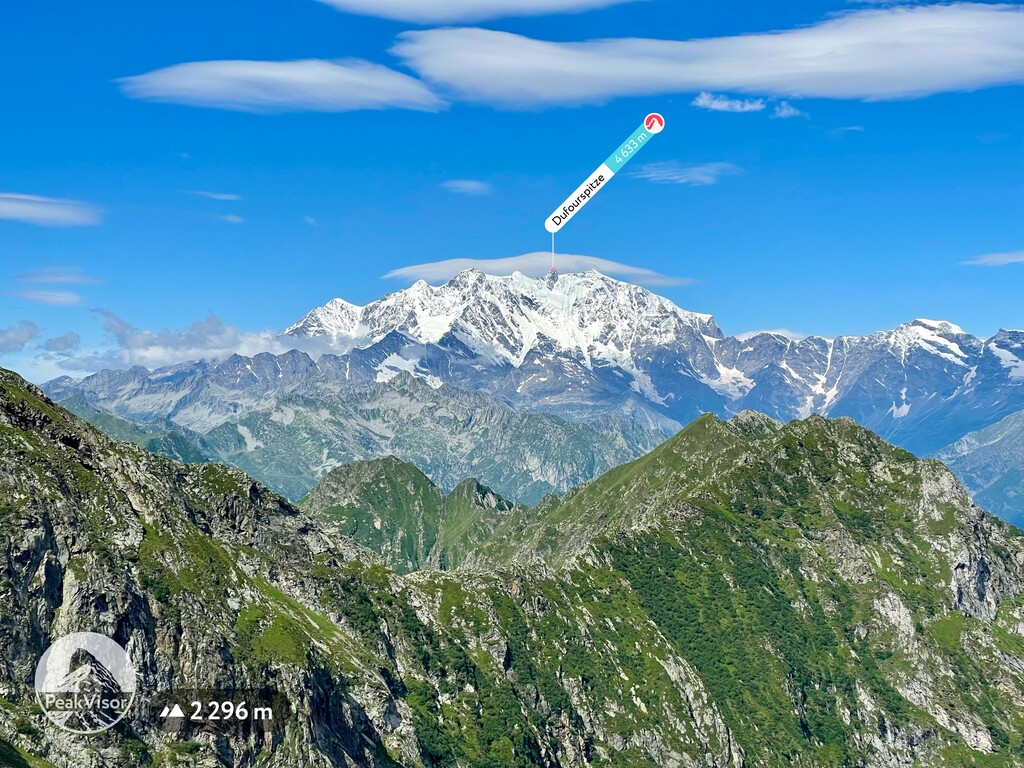
Moreover, Italy’s uniquely shaped peninsula and its 7,600km (4,700 mi) of coastline also shares a maritime border with a number of different countries in the region. This includes a shared border with Slovenia, Croatia, Montenegro, and Albania in the Adriatic Sea, Greece in the Ionian Sea, and Malta, Tunisia, Algeria, and France in the northern and southern Mediterranean.
Additionally, Italy is home to 2 enclave microstates within its borders - San Marino in the north and Vatican City near Rome. It also has its own exclave called Campione d'Italia in Switzerland which is completely surrounded by the Swiss canton of Ticino.
Italy is also a highly mountainous country, with approximately one-third of the country’s terrain home to mountains. In fact, the country contains part or all of some of Europe’s most notable peaks, including Monte Bianco (Mont Blanc), Monte Cervino (the Matterhorn), Monte Rosa, Bernina, and Gran Paradiso. Italy also contains 22 Ultras, or mountains with more than 1,500m of prominence.

The country is technically broken up into 20 different regions of various sizes. Each of these regions is further divided into a handful of provinces, with the country currently containing a total of 107 provinces, decentralized entities, cities, and municipal consortia.
Although this is more of a statistical definition than an administrative one, the country’s regions can be grouped up into 5 different macroregions which combine areas of similar geography or culture. Each of these regions has their own unique set of mountain ranges, parks, and hiking places to check out.
The North-West (Nord-Ovest) region of Italy is the country’s most heavily populated area. Home to about 16.1 million people, the North-West macroregion encompasses 4 the country’s most mountainous areas, including the regions of Aosta Valley, Lombardy, Piedmont, and Liguria.
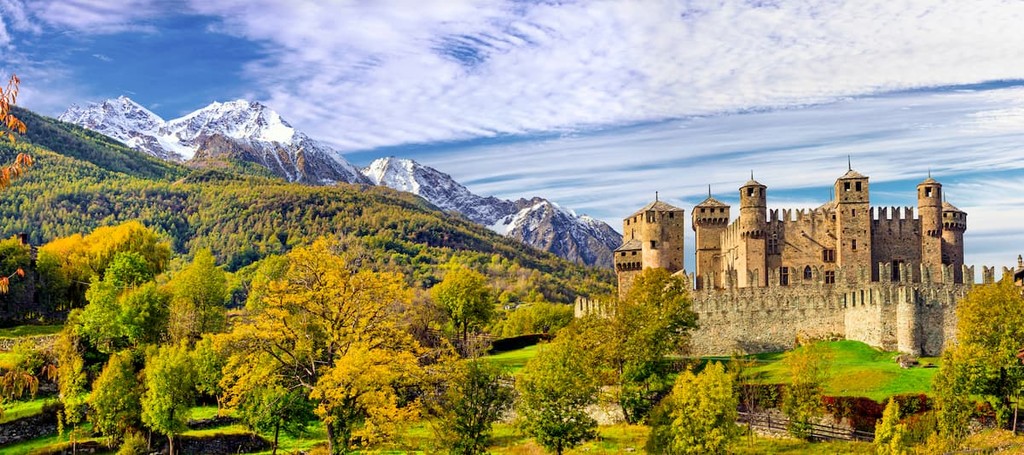
Each of these regions is quite rugged and boasts hundreds, if not thousands of mountains. Here is the breakdown of mountains per region:
Milan is the North-West macroregion’s most populous city with over 1.4 million people living in the city proper and nearly 3.3 million living in its metropolitan area. The North-West macroregion is perhaps best known for its stunning mountainscapes as it contains a significant portion of the Italian Alps and a small section of the Apennines.
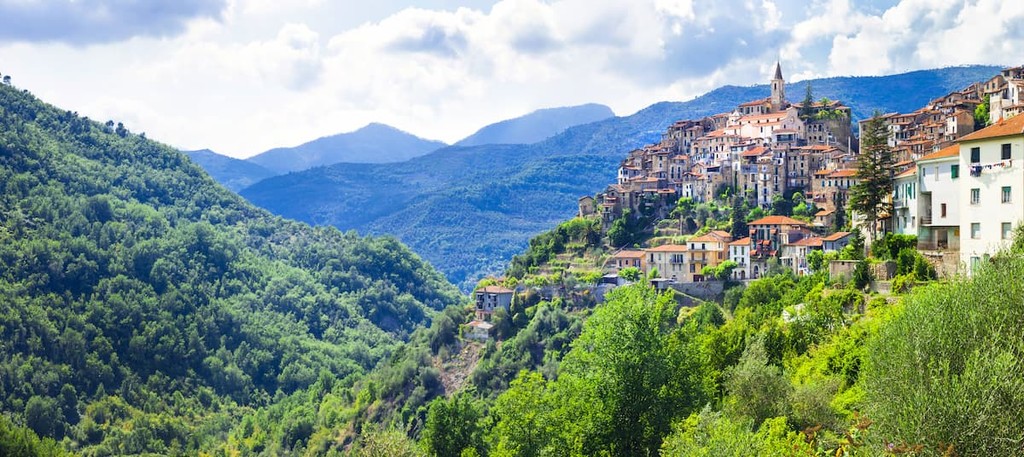
Moreover, the North-West macroregion encompasses parts of a number of Alps subranges, such as:
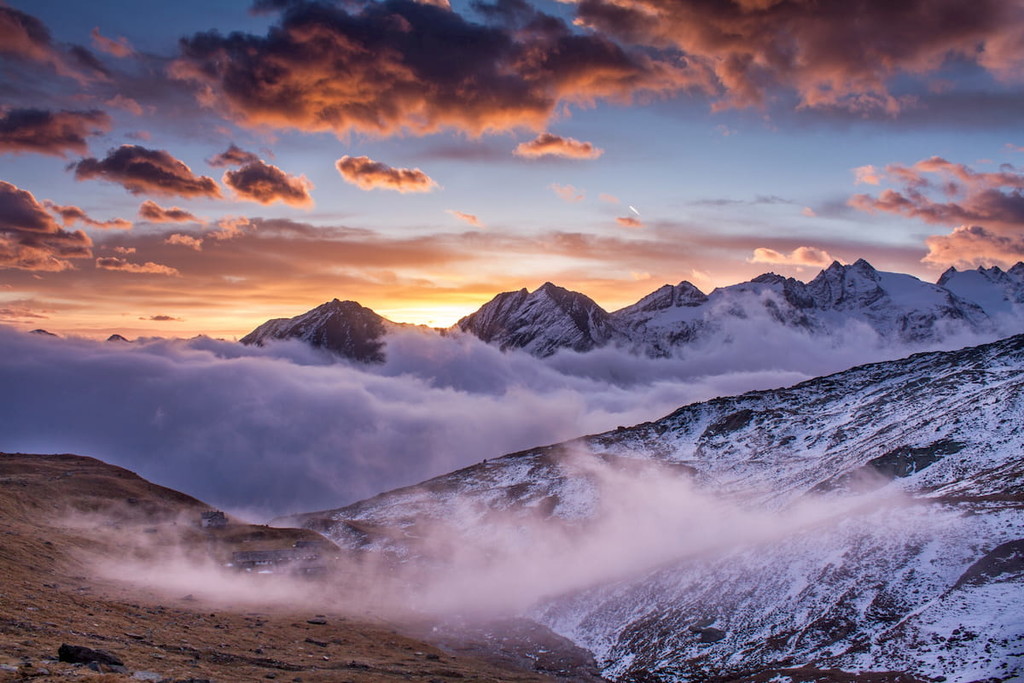
The North-West region is also a veritable treasure trove of hiking opportunities, thanks to its many parks, such as:

The second of Italy’s highly mountainous macroregions (the other being the North-West), the North-East (Nord-Est) is the fourth most populous macroregion in the country with about 11.7 million residents.
It contains the major city of Bologna, as well as the regions of Emilia-Romagna, Friuli-Venezia Giulia, Trentino-Alto Adige/Südtirol, and Veneto. Each of these regions contains thousands of mountains, such as:

Like its western neighbor, the North-East region also contains parts of the Alps and the Alpennies, as well as a number of the Alps’ major subranges. Perhaps the most notable Alps subrange in the region is the Dolomites (including the West Dolomites and East Dolomites).
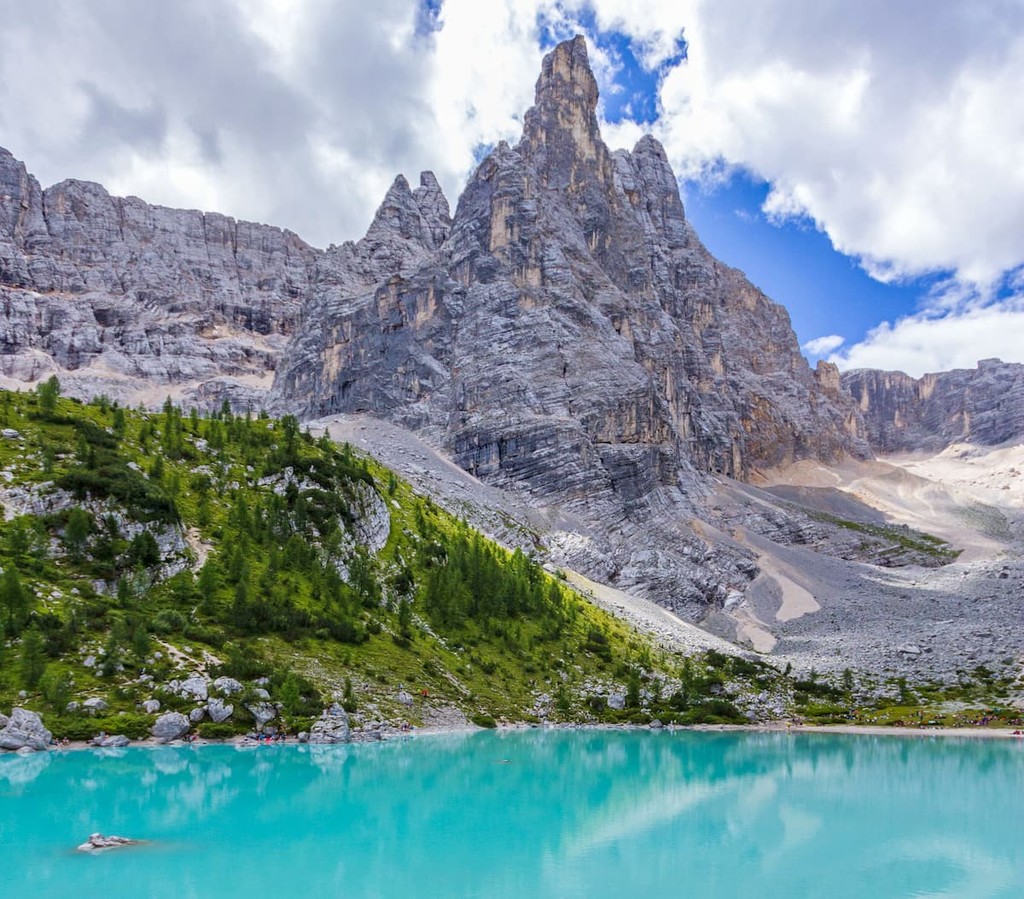
Other notable subranges include:

The North-East macroregion also contains a number of different parks, such as:

Italy’s third most populous macroregion, Central Italy or Centro, is home to the country’s capital,
Rome (Roma), and many of its most important cultural and historical sites. Central Italy is generally regarded as containing the regions of Lazio, Marche, Tuscany, and Umbria, though this is a statistical definition, rather than a cultural one.
The macroregion contains a significant portion of the Apennines, which extend down much of the Italian Peninsula. Each region contains thousands of mountains, including:
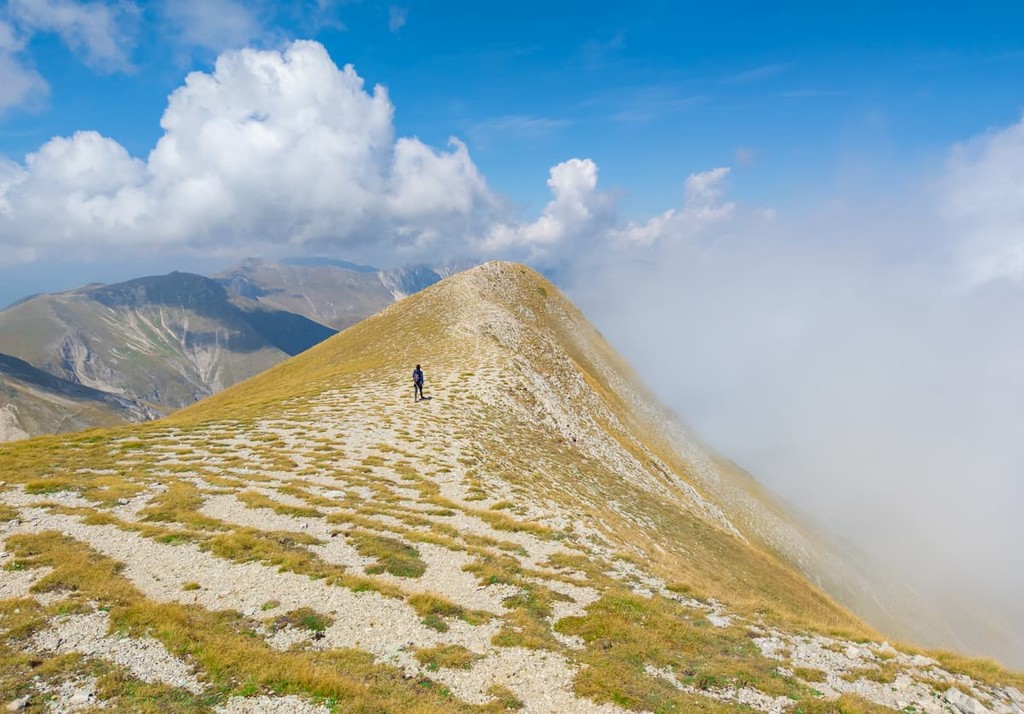
Although Central Italy isn’t as mountainous as the northern part of the country, it does still contain quite a few popular national and regional parks, such as:
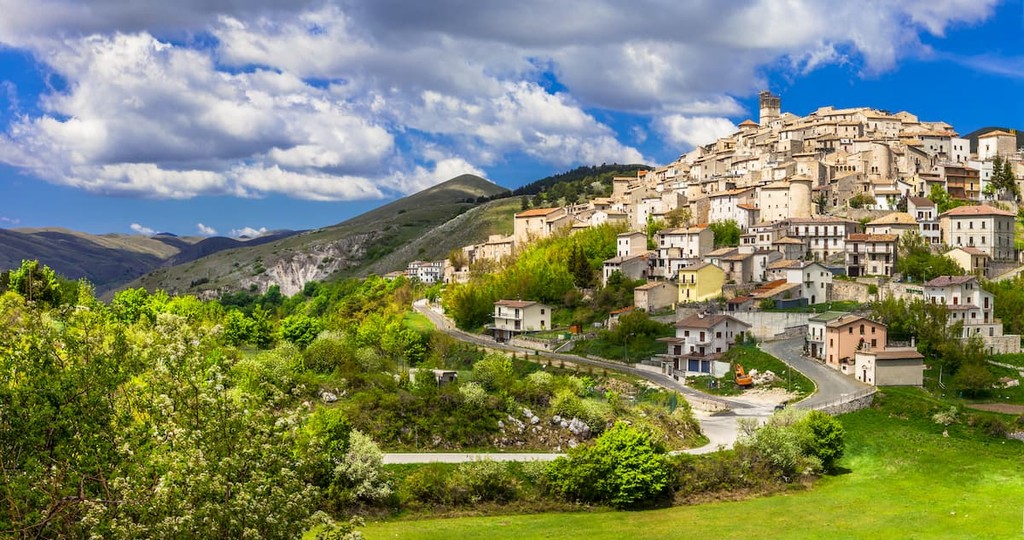
Encompassing the entire southern half of Italy, as well as nearly 25% of the country’s land area, South Italy is home to the city of Naples (Napoli) and nearly 14 million people.
However, it’s important to note that South Italy, which officially includes the regions of Abruzzo, Apulia, Basilicata, Calabria, Campania, and Molise is defined for statistical purposes and shouldn’t be confused with the historic region of the Mezzogiorno, which included these regions, as well as Sardinia and Sicily.
Although it’s best known for its stunning vistas, great vineyards, and beautiful coastlines, South Italy does contain a decent number of mountains. This includes:
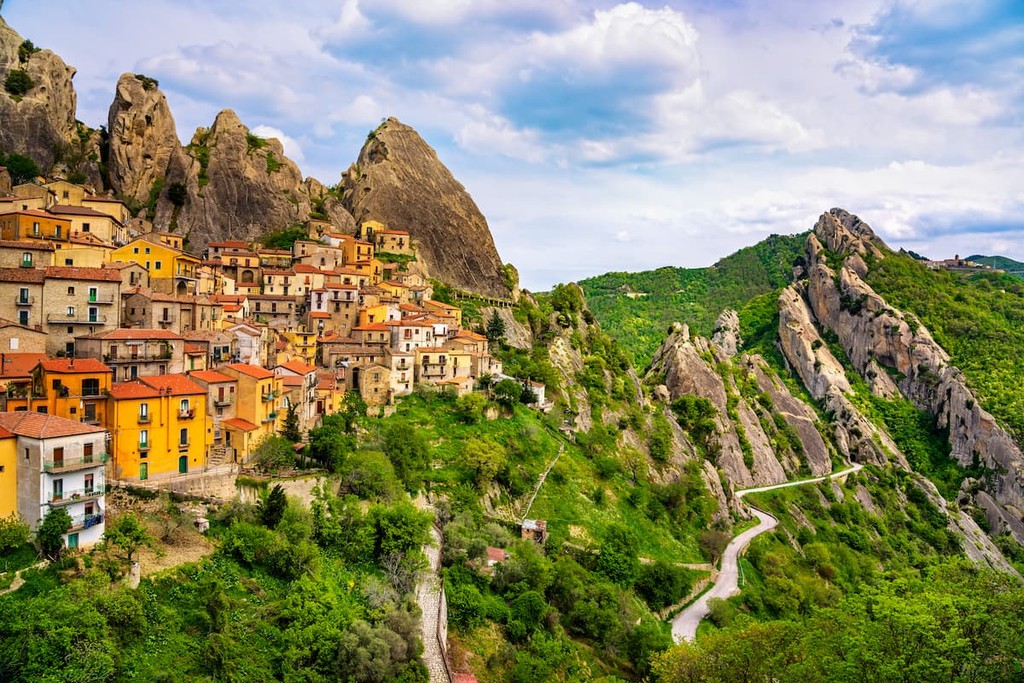
South Italy’s mountainscapes are dominated by the Apennines and there are many excellent hiking areas to check out, including:

The final macroregion of Italy, Insular Italy (Isole/Insulare) include the major islands of Sardinia and Sicily, as well as their associated archipelagos, which are separated from the mainland by the Tyrrhenian Sea (Mar Tirreno).
While the macroregion covers just 16.5% of Italy’s land area, it is home to about 6.7 million people. While Sicily is actually quite densely populated, Sardinia is one of the least densely populated parts of the country.
While the mountains in Italy are not part of either the Alps or the Apennines, there are thousands of high points throughout both islands. In fact, Etna in Sicily is the highest non-Alpine mountain in Italy. In particular, each island contains the following mountains:
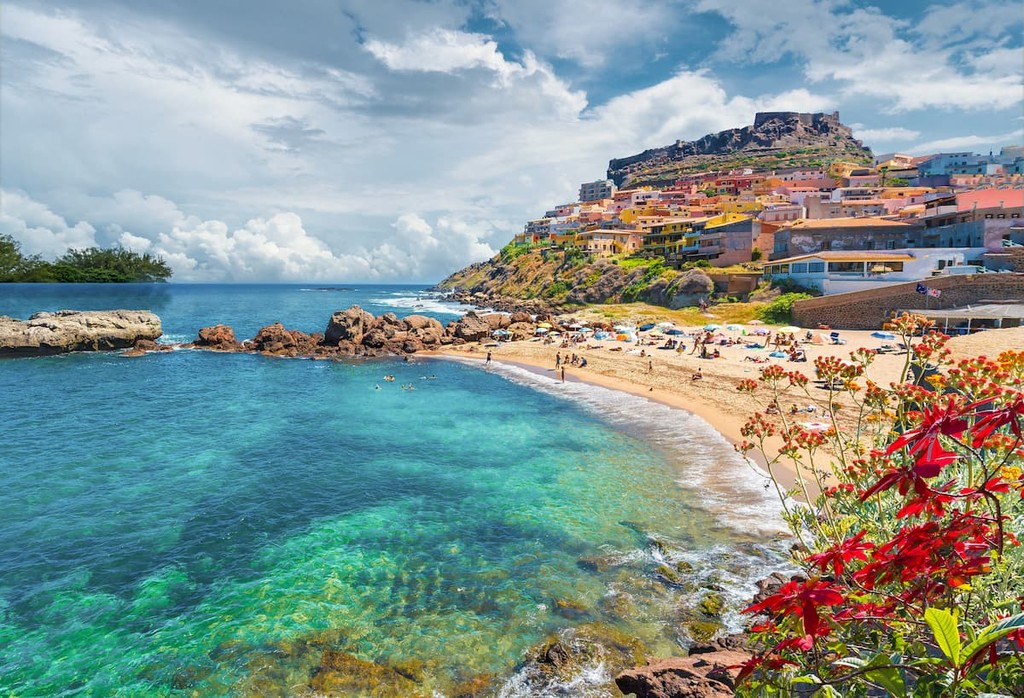
Each island is also home to a handful of great parks and hiking areas, such as the following parks in Sicily:

While Sardinia has fewer parks than Sicily, there are still some excellent places to check out, such as:
In a highly mountainous country, like Italy, a complex geologic history is to be expected. As a result, it’s easiest to discuss the country’s geology based on mountain range.
Comprising the northernmost part of Italy, the Alps are western Europe’s highest mountain range. The range itself covers parts of France, Italy, Switzerland, Liechtenstein, Austria, Germany, and Slovenia, though it is found just in the North-West and North-East macroregions of Italy.
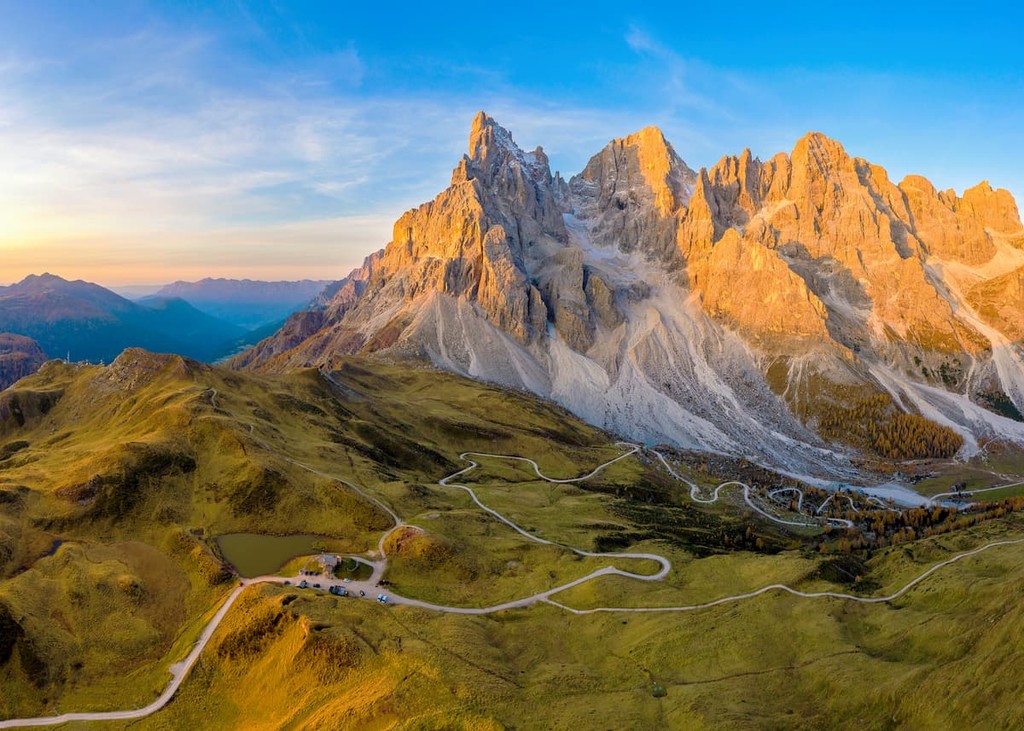
In particular, the Alps formed during a major mountain building event known as the Alpine orogeny, which started due to the collision of the Eurasian, African, Indian, and Cimmerian tectonic plates during the Cenozoic.
The orogeny actually formed mountains throughout a region called the Alpide Belt, which includes major mountain ranges such as the Himalaya, the Hindu Kush, the Karakoram, the Caucasus, and the Pyrenees.
Much of the range is home to heavily metamorphosed rocks as well as some sedimentary layers and occasional igneous intrusions. In Italy, one of the most notable subranges of the Alps is the Dolomites (Dolomiti), which is known for its dolomite rock. The range has also been extensively mined throughout the last few thousand years for precious metals and crystals.
Moreover, the Alps owe much of their current appearance to repeated eras of glaciation. Indeed, the range still contains a number of major glaciers, and many of its most notable features formed as a result of extensive glacial erosion.
The Apennines is a mountain range that extends down the length of the Italian Peninsula from its junction with the Ligurian Alps to the coastal city of Reggio di Calabria. It’s believed that the range formed over a number of different phases.
During the Alpine orogeny (the orogeny that formed the Alps) in the Cenozoic, the region that is now the Apennines experienced substantial uplift. Later on, during the Pliocene, the range experienced yet another period of uplift.
Vesuvius, Italy

Furthermore, the Apennines experienced repeated ingression and regression of the nearby sea, which led to the deposition and formation of various sandstones, clays, and conglomerates. Additionally, the range is known for its volcanism, which includes major peaks such as Etna, Mount Vesuvius, and Corno Grande.
The range is also quite seismically active and earthquakes are fairly common. Rockslides and landslides are also quite common in the range, thanks to its many brittle sedimentary rocks, which include limestones, sandstones, and mudrocks.
Due to its large area and diverse topography, Italy is home to a wide array of different ecoregions. In fact, it is one of the most biodiverse countries in Europe.
Italy is home to over 57,000 different recorded species, which is about one-third of all of the species on the continent. It is also home to over 4,700 endemic species which are native to the country.
Although Italy is home to a number of different ecosystems, there are 2 primary ecoregion divisions in the country: the Temperate Division and the Mediterranean Division.
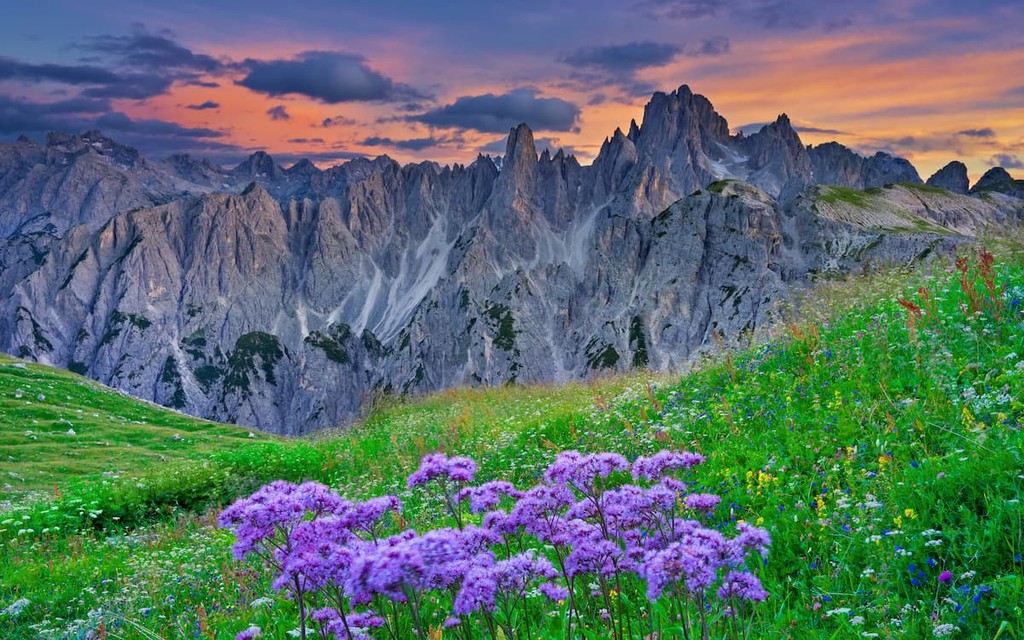
Italy’s Temperate Division encompasses about 64% of the country, including the Po Plain, the majority of the Apennines, and the alps. Here, the dominant vegetation is woodland with many oak, beech, and birch trees.
Meanwhile, the country’s Mediterranean Division includes the southern portion of the Apennines, Sicily, Sardinia, and the country’s Ionian, Tyrrhenian, and southern Adriatic coasts. In this ecoregion, the climate is hot and generally dry in the summer. It is mostly characterized by mixed woodlands and shrublands.
Italy is home to a truly incredible collection of wildlife, which can be found throughout the country. In addition to over 4,700 endemic animal species, the country contains tens of thousands of other mammals, birds, reptiles, amphibians, and fish.
Some of the most notable animal species in the country include Eurasian lynx, Italian wolves, Alpine ibex, Pyrenean chamois, Mariscan brown bears, axis deer, mouflon, European snow vole, Etruscan shrew, and the Alpine marmot.

The land that is now part of Italy has a long and storied history of human and archaic human inhabitation that dates back tens of thousands of years.
It is believed that the first neanderthals arrived in Italy no later than about 50,000 years ago, though anatomically modern humans are believed to have arrived a few thousand years later and have lived in the region ever since.
In fact, Italy is a veritable treasure trove of prehistoric remains and archaeological sites. Perhaps the most famous human remains to have been found in Italy is that of Ötzi the Iceman, which is an impressively well-preserved mummy that was found in South Tyrol and is believed to date back to about 3,400 BCE during the Copper Age.
The 3rd to 2nd millennials BCE saw a number of waves of arrivals of peoples from Indo-Europe, including people of the Remedello culture, the Beaker culture, the Terramare culture, and the Urnfield culture, among others.
By about 800 BCE, the Etruscan civilization was one of the most dominant in what is now Italy, though it isn’t wholly clear where the Etruscans came from or who their ancestors are. Around the same time, much of southern Italy was colonized by the Greeks, particularly around Sicily. The Greeks also established a number of major cities, such as Naples (Napoli).

Not long afterward, Rome was founded, according to legend, in 753 by Remus and Romulus. The founding of Rome led, of course, to the growth of the Roman Republic and later the Roman Empire, which spread throughout what is now Italy and much of Europe.
After the fall of the Roman Empire and the split into the Eastern and Western Empires in the 300s and 400s CE, the region was then split up into several kingdoms. Interestingly, this would be the last time that Italy was mostly unified until well over 1,000 years later.
The Middle Ages were a tumultuous time in what is now Italy. This period saw a succession of different invasions, conquests, and wars between rivaling tribes and the establishment of a number of different independent city-states.
Perhaps the most important event of the early Middle Ages in Italy was the crowning of Charlemagne as Holy Roman Emperor in 800 at Saint Peter’s Basilica. However, after his death, Charlemange’s empire quickly weakened, paving the way for the establishment of city states and Maritime Republics which relatively quickly became merchant republics rather than feudal societies.
Often considered the center of the Renaissance, Italy saw a boom in the arts, literature, sciences, and architecture after the Middle Ages and the arrival of the Black Plague.
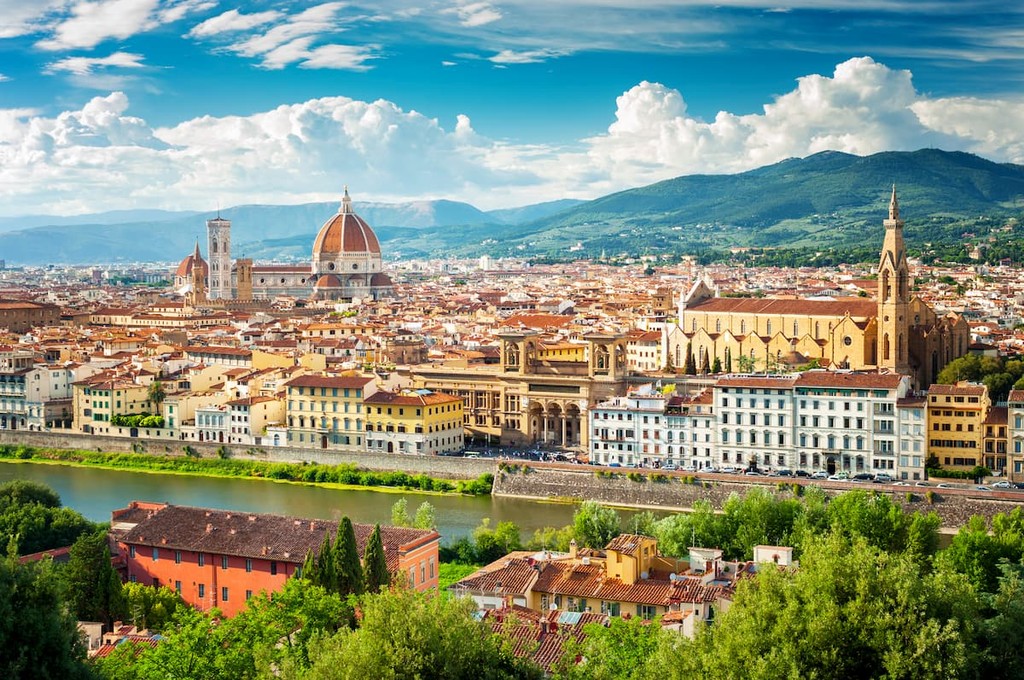
At this time, however, Italy was still not a single country, but rather a collection of independent city-states, such as Genoa, Venice, Florence, Milan, and Pisa. The states fought frequently, particularly in the early Renaissance.
France then invaded Italy in 1494, leading to the start of the Italian Wars. Eventually, Charles V, Holy Roman Emperor, defeated the French multiple times, and after the signing of the PEace of Cateau-Cambrésis in 1559, France renounced its claims to mainland Italy.
After the Peace, the northern part of Italy was indirectly ruled by the Habsburgs of Austria and the south was indirectly ruled by the Habsburgs of Spain.
During the 17th century, however, Italy was a very tumultuous place, particularly as the region’s ports became less important after the start of European colonization in the Americas.
In the 18th century, Italy experienced further political turmoil as an indirect result of the War of Spanish Succession and then as a direct result of Napoleon’s invasion of Italy. Napoleon conquered much of the region during the French Revolution, changing the administrative layout of the region.
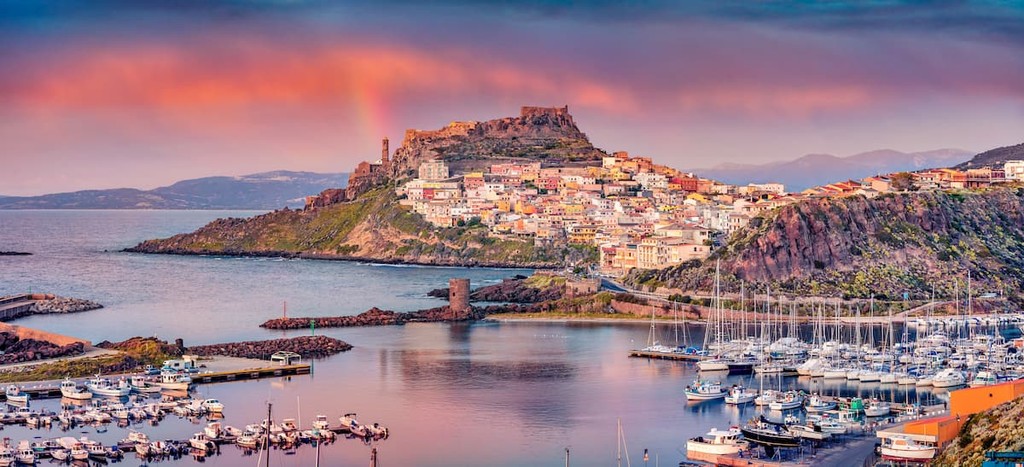
By 1861, however, Italy was unified into a single nation, thanks to the work of Giuseppe Garibaldi. The period after unification also saw widespread emigration as part of the Italian diaspora, where many Italians left their homelands and went to the United States and South America.
Throughout the 20th century, Italy was a part of both world wars and was a major player in the second during its fascist rule under Benito Mussolini. The fall of fascism after World War II and the birth of the Italian Republic in 1946 led to the start of a new age for a unified Italy.
Since the establishment of the Italian Republic, Italy has become a major hub for culture and commerce in southern Europe. It remains a popular tourist destination, thanks to its cuisine, historic sites, and many outdoor recreation opportunities.
The country also has a long and storied history of mountaineering, which dates back to the establishment of the Italian Alpine Club in 1863 in Turin and the Golden Age of Mountaineering in the 19th and early 20th centuries.
Italy is known for its hiking trails, and there are many notable treks in the country. There are several types of hiking trail markers in the country, including:
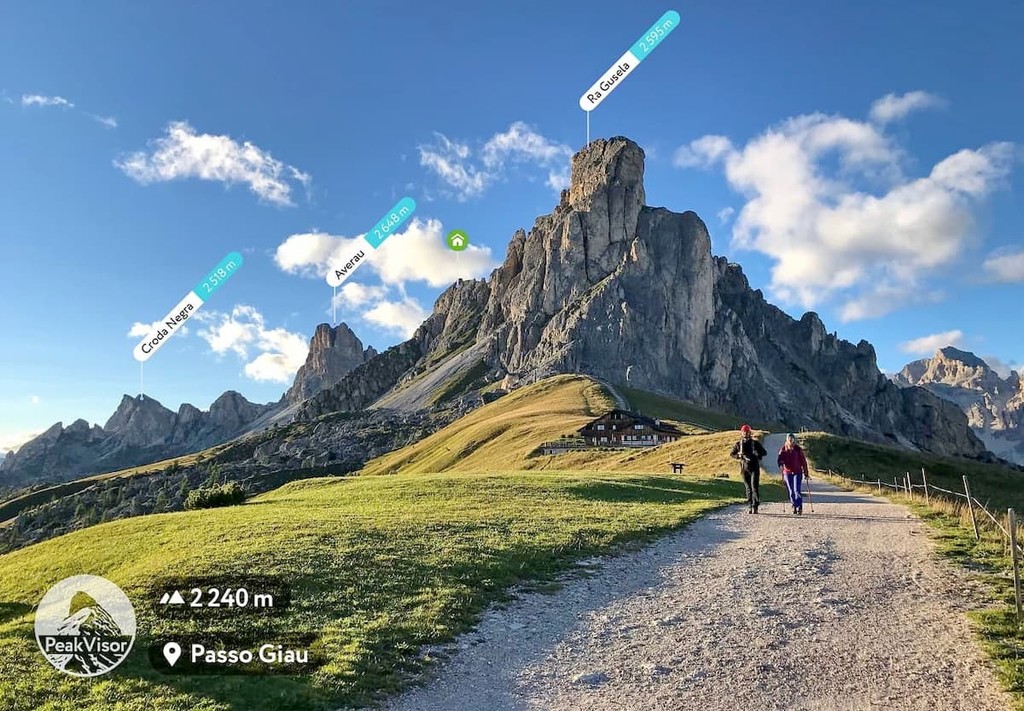
Some of the signs also list a “trail difficulty” for visitors to take note of. Here is the meaning of the primary trail difficulty indicators:
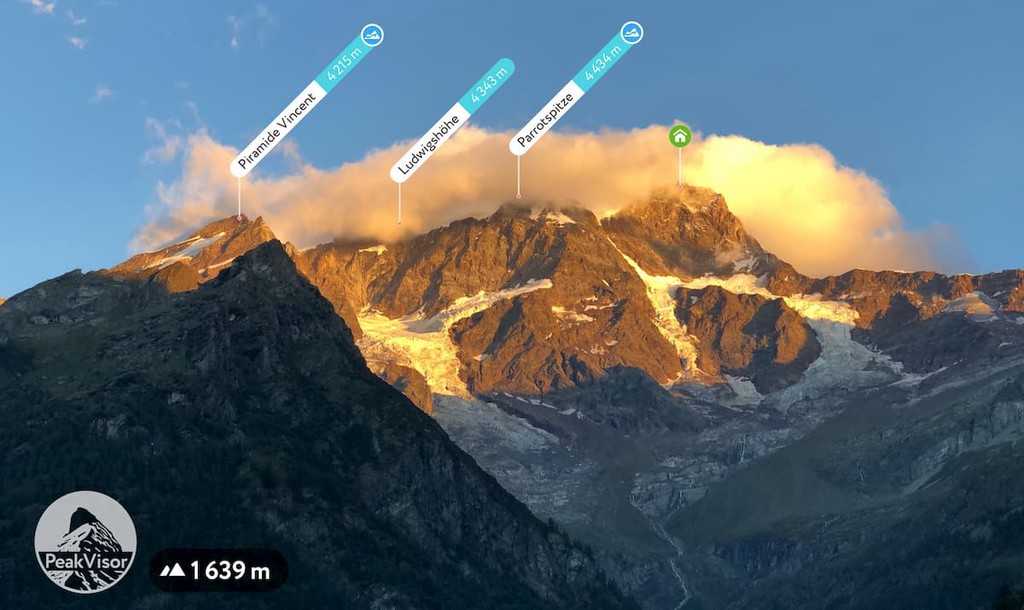
Looking for a place to adventure in Italy? Here are some of the best parks to check out:
Located in central Italy, just to the southeast of Rome, Abruzzo, Lazio and Molise National Park (Parco Nazionale d'Abruzzo Lazio e Molise) is the second oldest national park in the country. It contains 172 named mountains, the highest of which is Quota and the most prominent of which is Monte Petroso.
The park is best known for its exceptional collection of wildlife. In fact, it was initially designated to protect the region’s remaining population of Italian wolves and Marsican brown bears. It also offers excellent hiking, cycling, canoeing, skiing, and horseback riding opportunities.
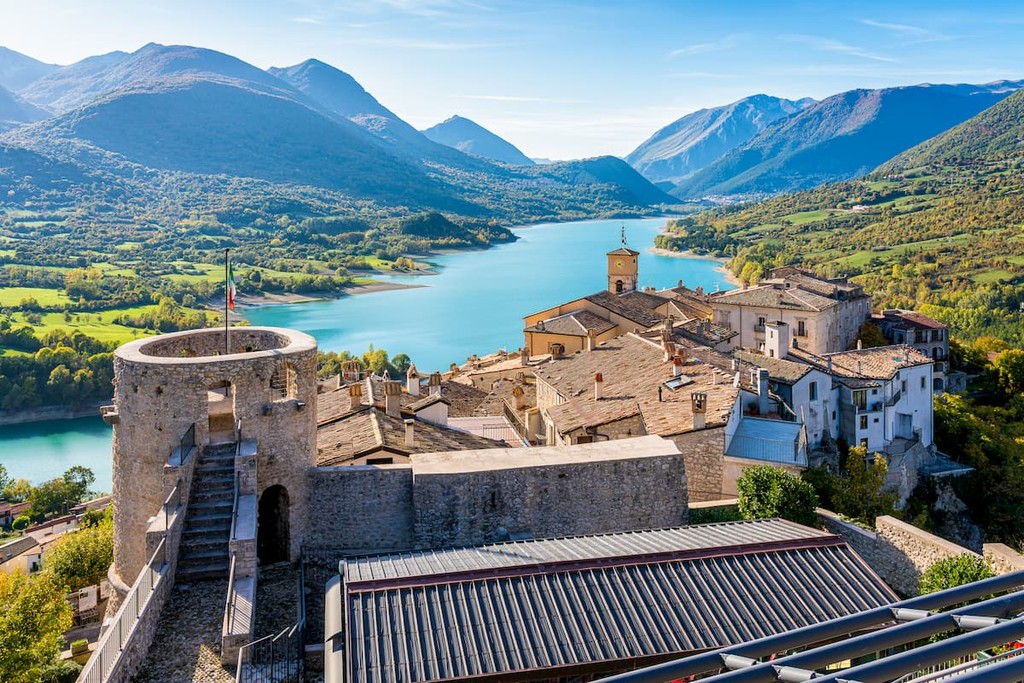
Gran Paradiso National Park (Parco nazionale del Gran Paradiso) is located in North-West Italy in the Graian Alps between the Piedmont and Aosta Valley regions. It contains 237 named mountains, the highest and most prominent of which is its namesake, Gran Paradiso.
Boasting exceptional mountain views, Gran Paradiso is contiguous with Vanoise National Park (Parc national de la Vanoise) in France. It was originally established to protect the Alpine ibex, but it is also an exceptional place to visit if you’re looking to hike or climb in the Graian Alps.
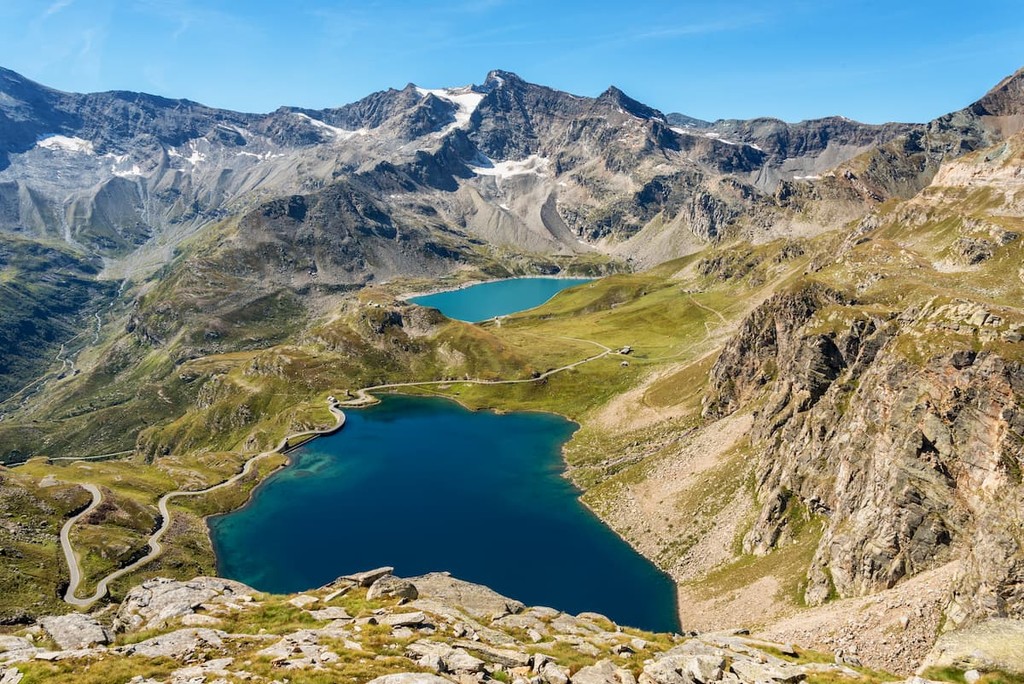
Cinque Terre National Park (Parco Nazionale delle Cinque Terre) is a small but stunning coastal park located in the Liguria region. It contains 23 named mountains, the highest and most prominent of which is Monte Malpertuso.
The park is also a UNESCO World Heritage Site and it encapsulated a collection of 5 towns that are located on cliffs along the Ligurian Coast. It is an exceptionally popular ecotourism destination as the park’s trails - especially the Blue Path - offer a great way to visit the region’s historic towns and to experience its rich culture.
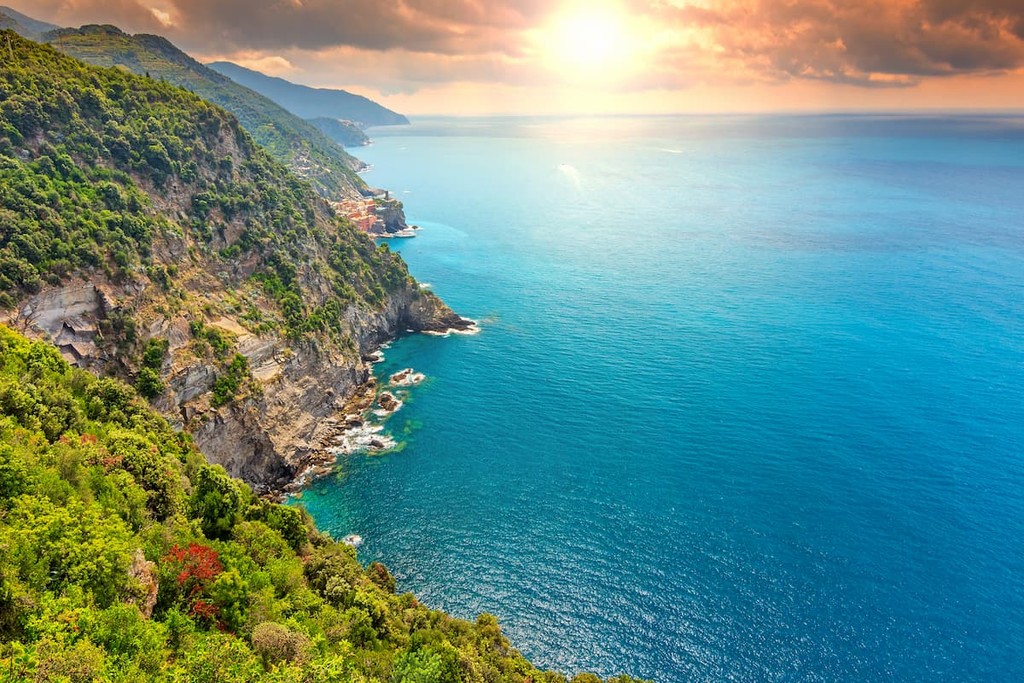
Featuring towering peaks and stunning alpine landscapes, Dolomiti Bellunesi National Park (Parco nazionale delle Dolomiti Bellunesi) is a small national park in North-East Italy. It contains 219 named mountains, the highest of which is Schiara and the most prominent of which is Piz di Mezzodi.
The park is also part of a larger World Heritage Site and it was designed to protect the Dolomite’s beautiful mountainscapes. Much of the park is located at very high elevation, though the hiking and climbing opportunities in the park are second to none.
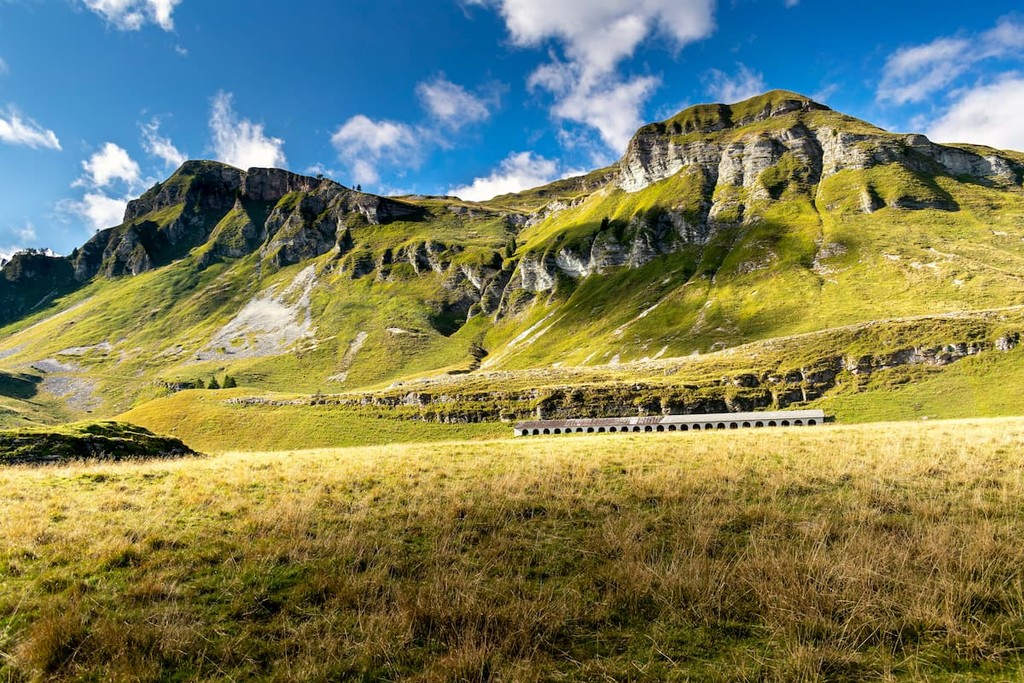
Gran Sasso and Monti della Laga National Park (Parco Nazionale del Gran Sasso e Monti della Laga) is one of the largest protected areas in all of southern Europe, with over 1,400 sq. km (545 sq. mi) of land within its borders. It contains 410 named mountains, the highest and most prominent of which is Corno Grande - Vetta Occidentale.
The park is very rugged and it contains a very biodiverse ecosystem. There are thousands of plants in the park and some, like the Abruzzo Edelweiss, are endemic to the region. Moreover, there are about 300km (190mi) worth of hiking trails in the park for visitors to enjoy.
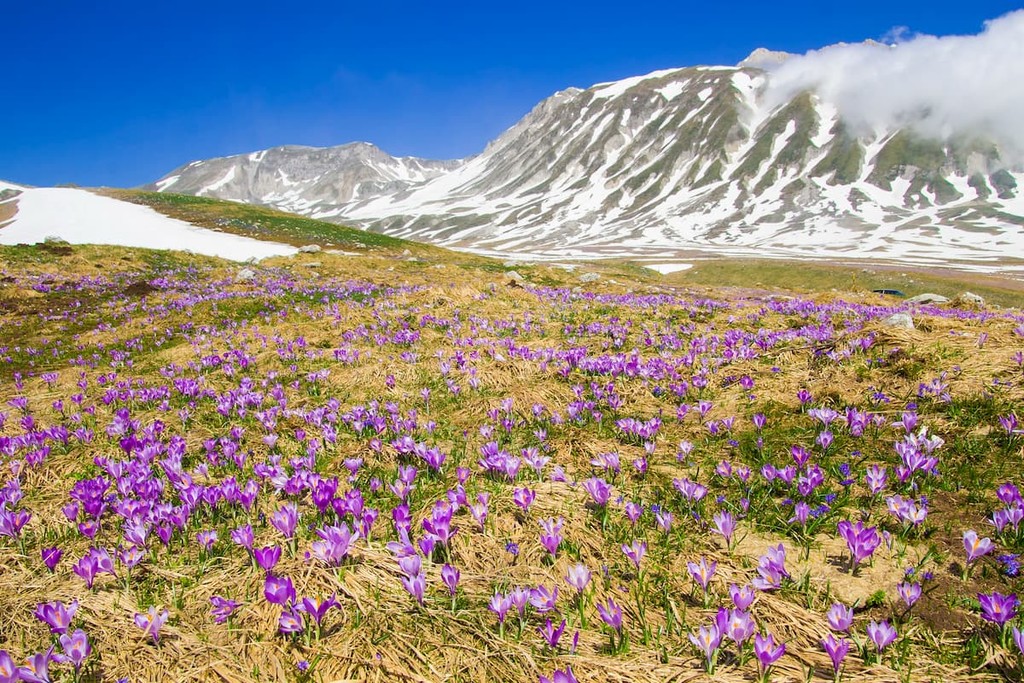
For skiing and snowboarding enthusiasts, there are more than 280 ski resorts in Italy. They are located throughout the country, but the greatest number of areas for skiing in the Italian Alps is in the north of the state, which also brought together the largest of them. On the administrative map, the country’s most ski regions are Trentino-Alto Adige/Südtirol, Veneto, Lombardy, Piedmont (Piemont in Italian), Aosta Valley, as well as Friuli Venezia Giulia. In the Apennine Mountains, ski resorts are mostly located in Tuscany, Emilia-Romagna, and Abruzzo. In the more southern regions, there are some individual small resorts too.
The largest ski area in Italy is Dolomiti Superski, which includes 12 major ski resorts and about 30 smaller ones with more than 1,200 km (746 mi) of slopes, of which about 500 km (311 mi) are connected, i.e. offer continuous riding, and more than 450 ski lifts in total.
The Val Gardena / Gröden is the largest among these 12 resorts with more than 170 km (106 mi) of slopes and more than 80 ski lifts. This and other four largest major areas of this system—Val di Fassa, Alta Badia, Arabba-Marmolada, and Cortina d’Ampezzo—coincide with the five Ladin valleys, the native people of this region. The remaining 7 areas are Gitschberg Jochtal, Kronplatz / Plan de Corones, 3 Zinnen Dolomites, Alpe Lusia-San Pellegrino, Val di Fiemme-Obereggen, San Martino di Castrozza-Passo Rolle, and Civetta.
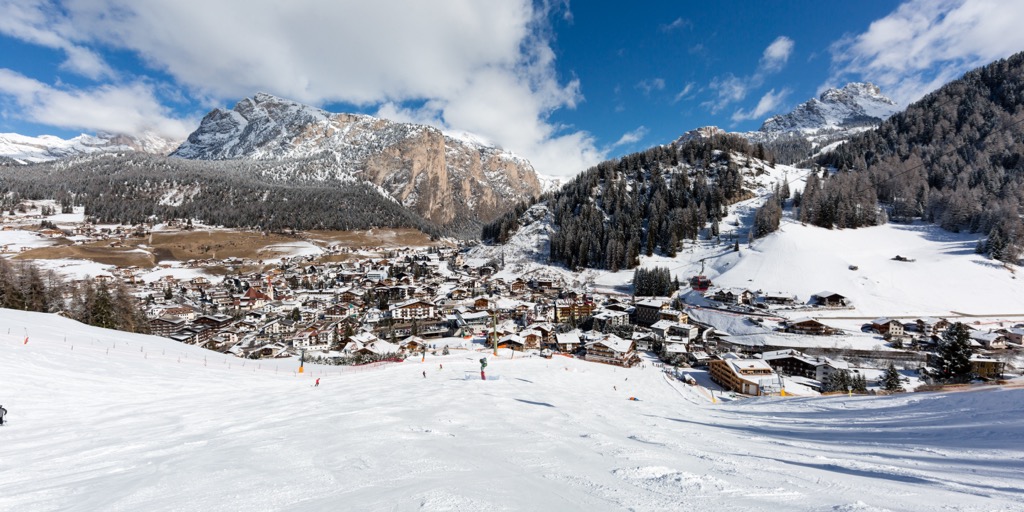
Other major areas for skiing in northern Italy, which are located in it in whole or in part, include the following ones with more than 100 km (62 mi) of slopes and more than 20 ski lifts each in descending order of size:
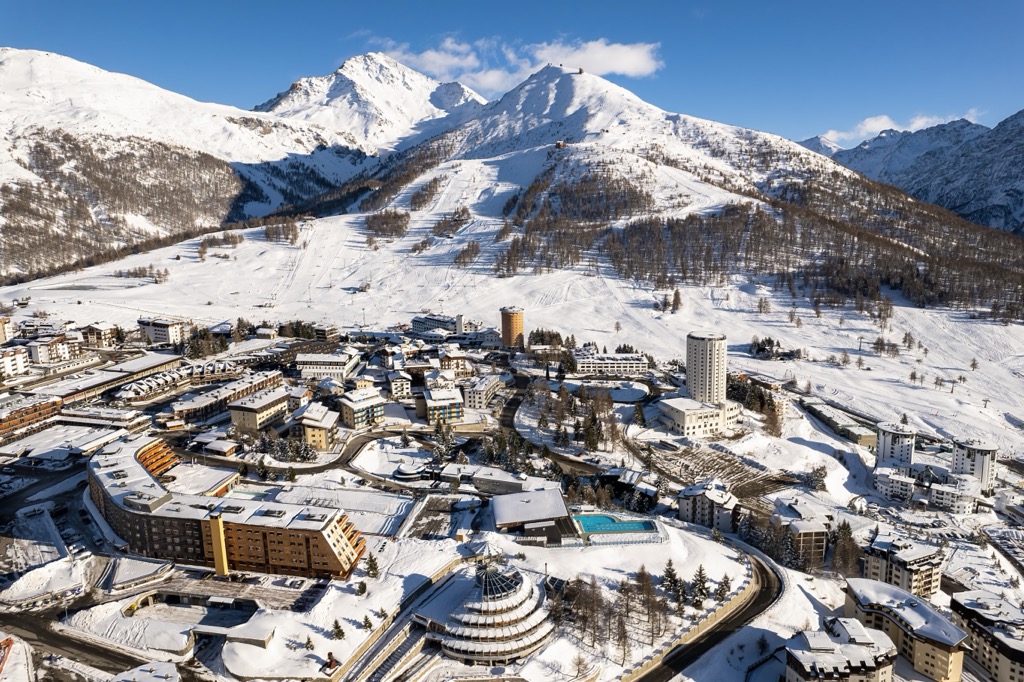
Outside the Alps, in the Apennine Mountains, in the southern part of the country, the largest resorts are the following:
The two main ski resorts near Milan, the largest Italian city, are Piani di Bobbio near the city of Lecco on the Comi Lake with more than 35 km (22 mi) of slopes and more than 10 ski lifts, and Mottarone on the Maggiore Lake with more than 15 km (9 mi) of slopes and more than 5 ski lifts. The main ski resort near Rome, the capital of Italy, is Campo Catino with more than 10 km (6 mi) of slopes and more than 5 ski lifts. The nearest resorts to the other 15+ major cities in Italy are the following ones:
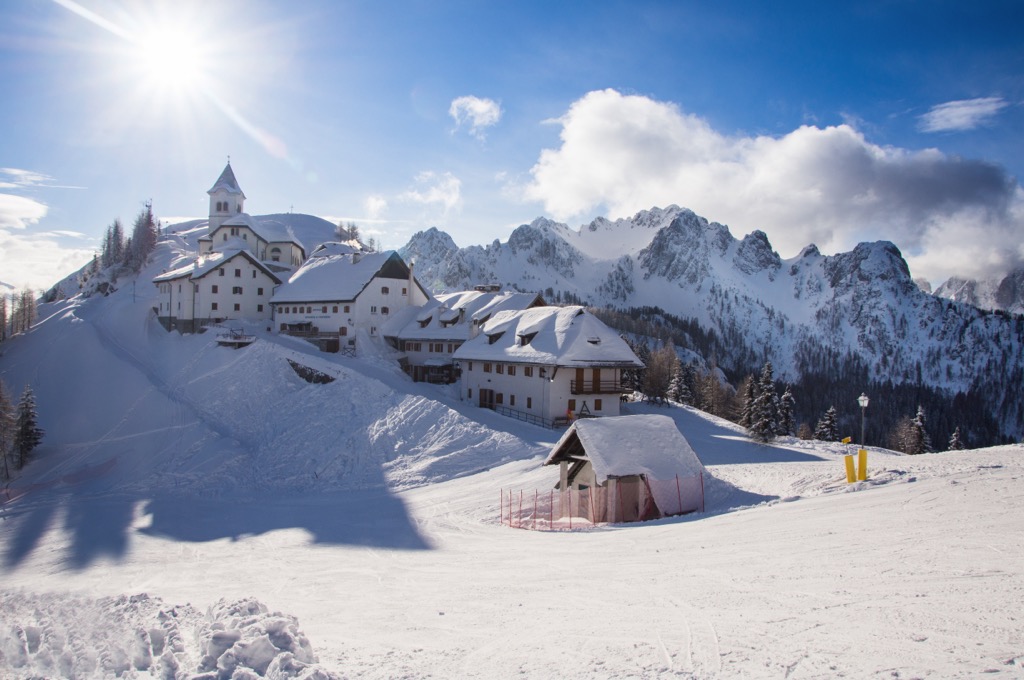
Check the Italy ski resorts map in the World Mountain Lifts section of the site. It includes information about open ski lifts / slopes in Italy in real-time with opening dates and hours. There are also year-round cable cars, funiculars, cog railways, aerial tramways, and all other types of mountain lifts.
Italy’s many cities are famous for their stunning architecture, amazing culture, and fantastic food. Here are some of the best places to visit if you’re planning a trip to Italy:
Located in northern Italy, Milan is the capital of Lombardy and the second-most populous city in the country. Milan is located close to the Italian Alps and it is a national hub for commerce, entertainment, and tourism. Moreover, Milan is a major capital for fashion and it hosts a fashion week each year. The city is accessible by air, rail, and road, and it has an excellent public transportation network.
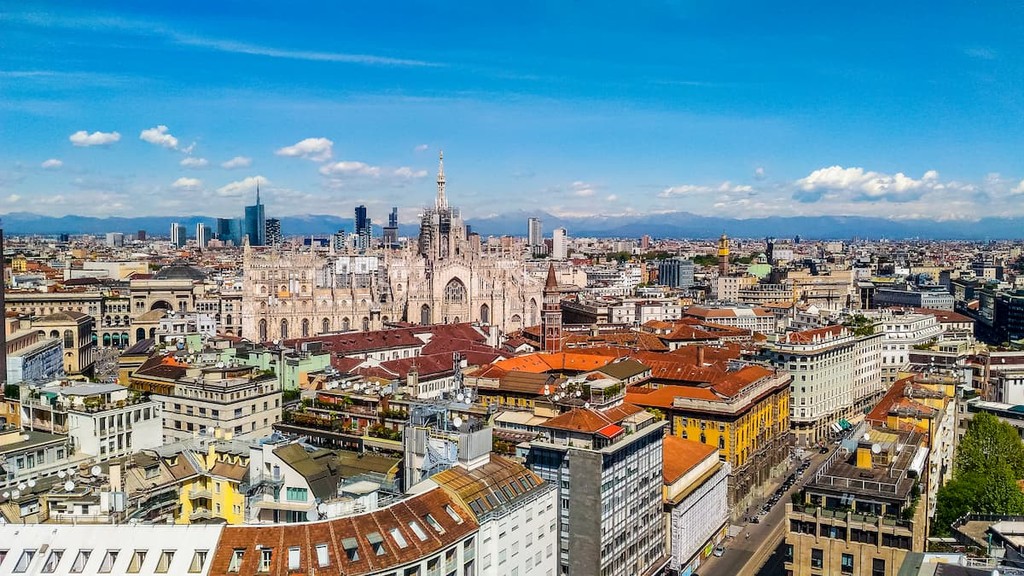
The capital of Italy and one of its oldest continuously inhabited cities, Rome (Roma) is located in Lazio near the country’s central Tyrrhenian coast on the Tiber River. Rome has been continuously inhabited for the better part of 3,000 years and it’s home to some of the country’s most important cultural sites.
Rome is a transportation hub for the country and it is easy to get to by road, air, and train, especially if you’re looking to also visit other parts of Italy.

Situated in North-East Italy, Bologna is the capital of Emilia-Romagna and is home to around 400,000 people. A truly international city, Bologna is home to a large concentration of immigrants and it is a European capital of Culture. Additionally, Bologna is home to the world’s oldest university, the University of Bologna, which was established in 1088 CE.
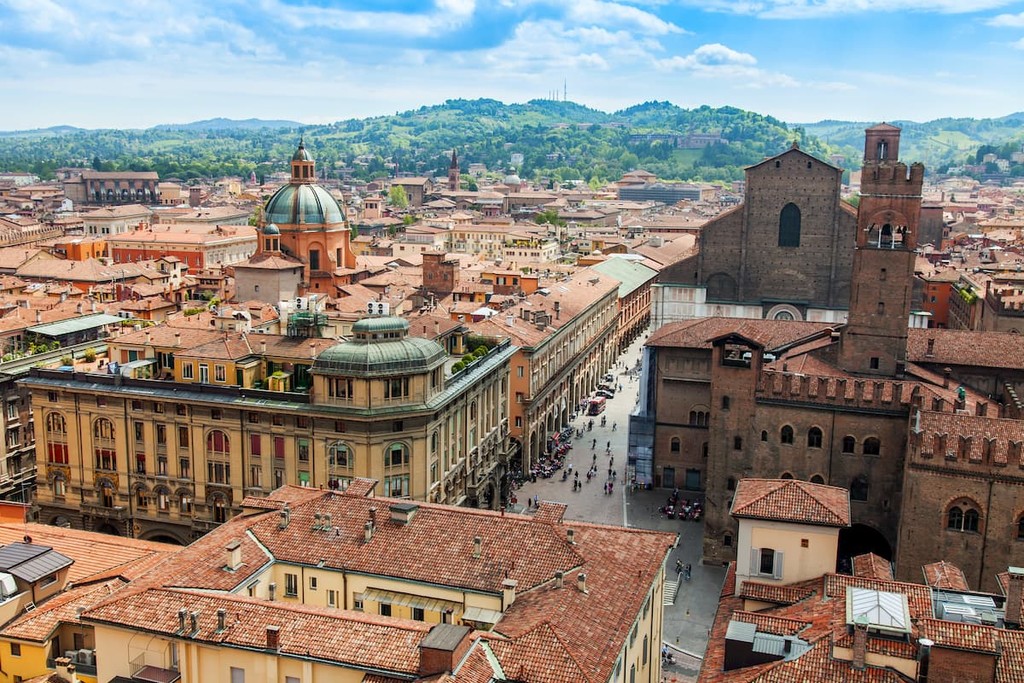
Naples (Napoli) is the capital of Campania and the largest city in South Italy. With nearly 1 million residents, Naples is a major metropolitan area for the country. Its city center is a UNESCO World Heritage Site and it offers excellent transportation connections to many of the nearby islands, as well as the southern part of the country.
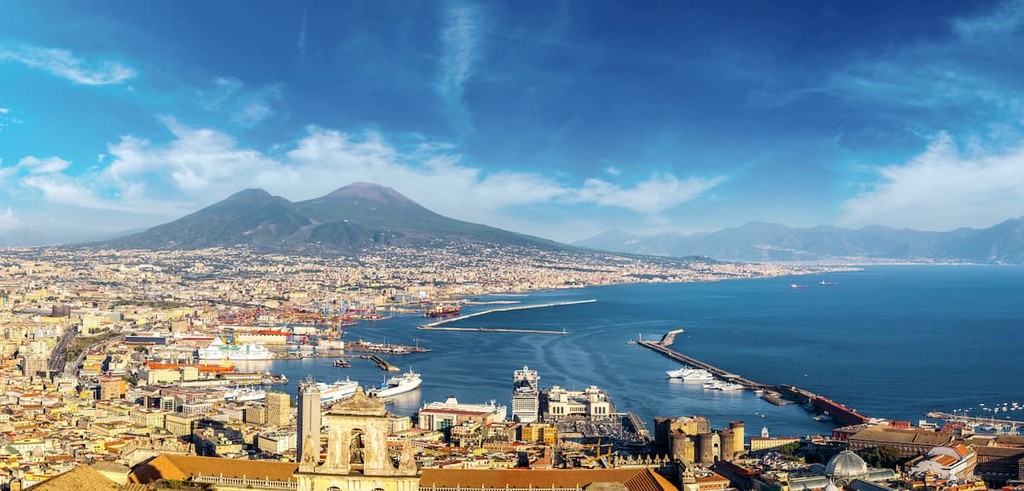
The capital of Sicily, Palermo was founded in 734 BC and has been inhabited ever since. It currently has around 900,000 residents and it's a major hub for Sicily’s tourism industry. Palermo is accessible by air, bus, road, train, and sea both to the rest of the island and to mainland Italy.
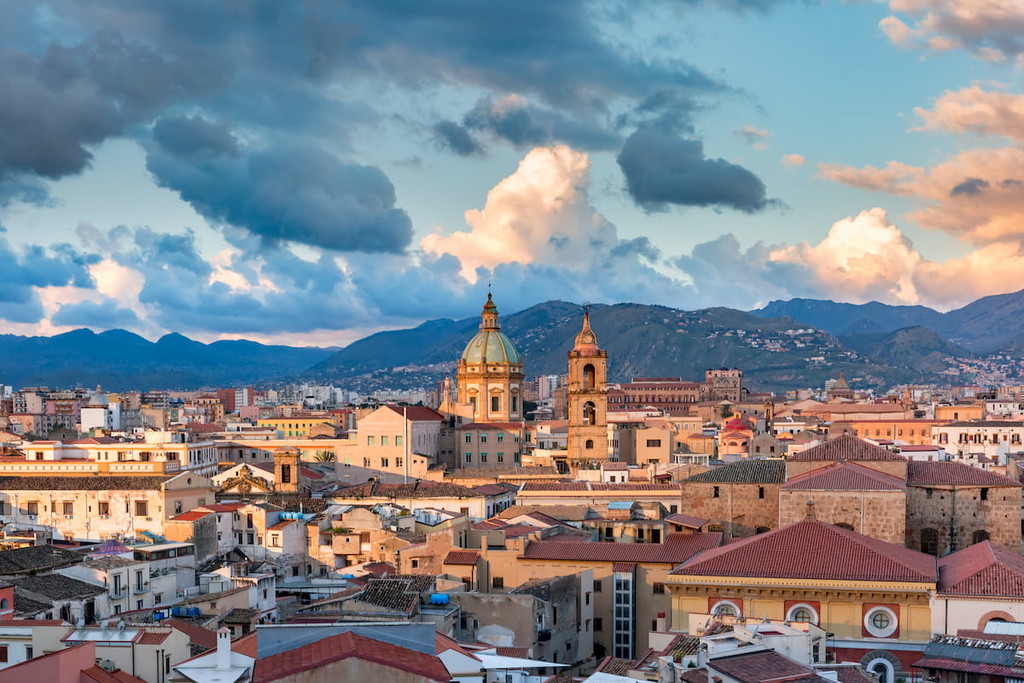
Explore Italy with the PeakVisor 3D Map and identify its summits.








top10
ultra
glacier
europe-4500ers
alps-4000ers
italy-ultras
france-ultras
top10
ultra
glacier
europe-4500ers
alps-4000ers
italy-ultras
switzerland-ultras
top10
ultra
glacier
europe-4500ers
alps-4000ers
italy-ultras
france-ultras
top10
ultra
apennine-2000
italy-ultras
top50
ultra
glacier
alps-4000ers
italy-ultras
switzerland-ultras
top10
ultra
glacier
europe-4500ers
alps-4000ers
italy-ultras
switzerland-ultras
top50
ultra
glacier
italy-ultras
top50
ultra
glacier
alps-4000ers
italy-ultras
